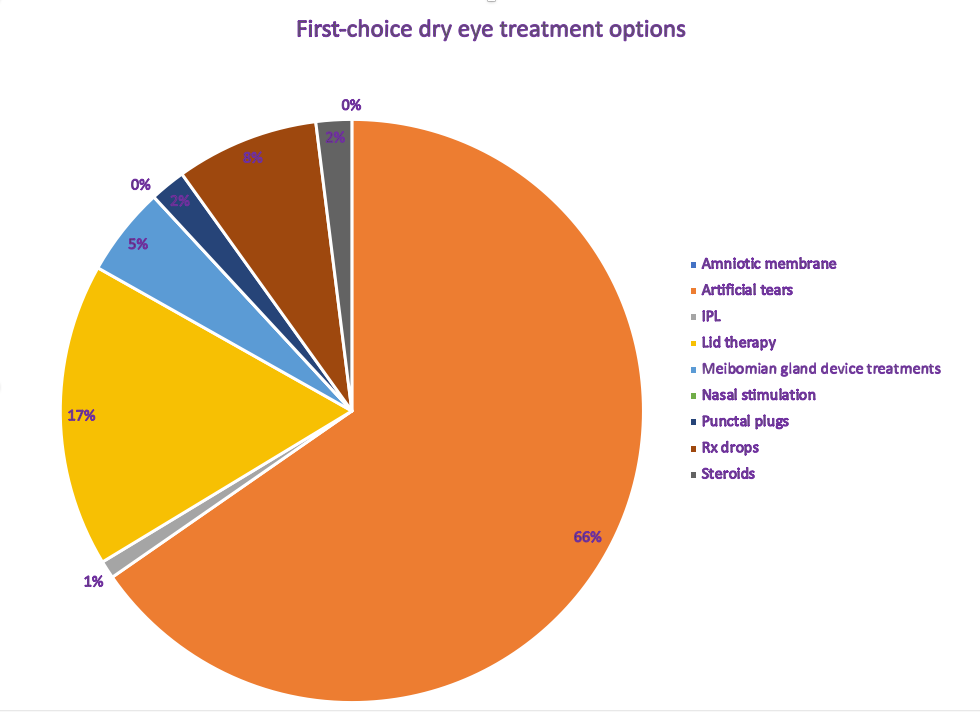ODs reach for artificial tears first to treat dry eye

In a poll fielded on the Optometry Times website, we asked ODs what treatment option they choose first when managing dry eye patients.
A total of 185 responses were tallied. The multiple-choice poll answers included:
• Amniotic membrane
• Artificial tears
• IPL
• Lid therapy
• Meibomian gland device treatments (LipiFlow, BlephEx, iLux, NuLlids)
• Nasal stimulation devices (True Tear)
• Punctal plugs
• Rx drops (Restasis, Xiidra)
• Steroids
Related: Explore the relationship between dry eye and sleep
The majority of respondents look to artificial tears to treat dry eye with 66 percent choosing them first.
Lid therapy was second choice, but the choice was not close. Only 17 percent of respondents look to address the lids first.
After another sharp drop, Rx drops come in third with 8 percent of respondents opting for this therapy to begin treatment.
Related: Ophthalmic community focusing on DED education
Meibomian gland device treatments are fourth with 5 percent of ODs, then steroids and punctal plugs tie for fifth place with 2 percent of respondents.
IPL hits seventh place with only 1 percent of ODs choosing this option first.
Amniotic membrane and nasal stimulation tie for last place with 0 votes for them.
Related: Understanding prevalence, demographics of dry eye disease
Newsletter
Want more insights like this? Subscribe to Optometry Times and get clinical pearls and practice tips delivered straight to your inbox.